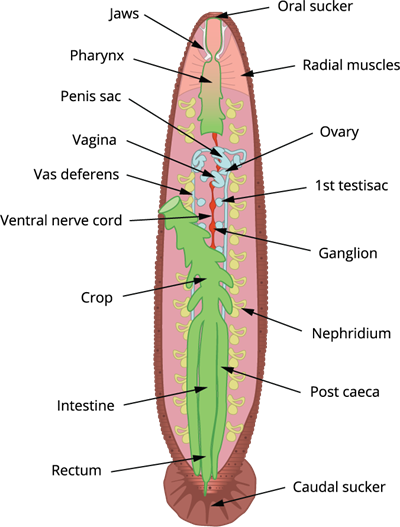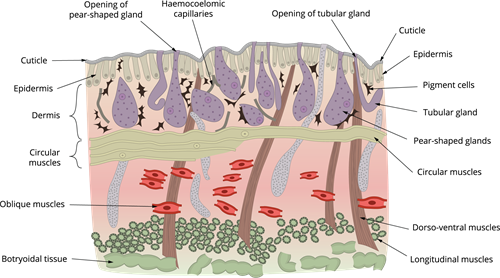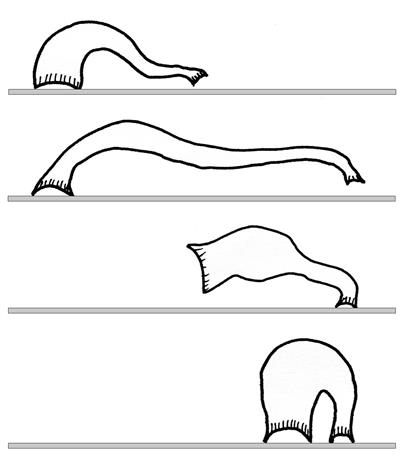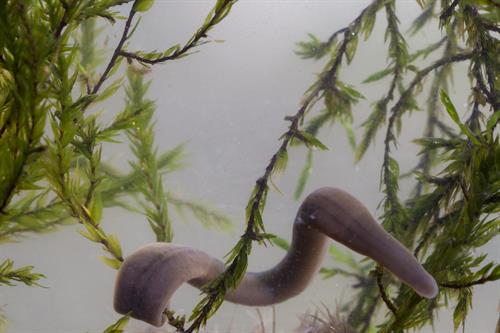PDF chapter test TRY NOW
An organism has to interact with its surroundings for its survival. The substances from inside the organism's body have to be sent out, and the same has to be taken in for the survival of the organism and even for the species survival.
For the interactions, the organism's body needs to have openings on its body surface, and those are called apertures.
In this object, the external apertures of the leech are explained.
External aperture of the leech:
The external aperture of the leech consist of the following parts viz.,
- Mouth
- Anus
- Nephridiopores
- Male genital pore
- Female genital pore

External apertures of leech
Mouth location: Middle of anterior sucker
Anus location:Small aperture opens on the mid-dorsal side of 26th segment.
Nephridiopores: Nephridia have \(17\)pairs of nephridiopores that open to the outside. From 6 - 22, they are found ventrally on the final annulus of each segment.
Male genital pore: It's a mid-ventral aperture between the \(10th\) segment's second and third annuli.
Female genital pore: It is located between the second and third annuli of the \(11th\) segment, mid-ventrally.
The \(33\) segments of leech's body is divided into six regions.
| Cephalic region | \(1 - 5\) segment |
| Pre-clitellar region | \(6 - 8\) segment |
| Clitellar region | \(9 - 11\) segment |
| Middle region | \(12 - 22\) segment |
| Caudal region | \(23 - 26\) segment |
| Posterior sucker | \(27 - 33\) segment |
Body wall:

Transverse section of body wall
The body wall of leech has five layers:
- Cuticle (outermost layer)
- Epidermis (below the cuticle)
- Dermis (below the epidermis) - made up of connective tissue
- Muscular layer (circumferential and longitudinal muscles)
- Botryoidal tissue covers the entire coelom around the gut and is found beneath longitudinal muscles.
The glands of the body wall:
| Slime glands |
|
| Sucker glands |
|
| Prostomium glands |
|
| Clitellar glands |
|
Locomotion:
The video explaining the locomotion of leech
As leech can move both on land and water, it has two types of movements;
- Looping or crawling movement
- Swimming movement
Looping or crawling movement:

Looping or crawling movement of leech
Muscle contraction and relaxation are responsible for this type of movement. During moving on a substratum, the two suckers act as attachment points.
Swimming movement: Leeches are known for their active swimming and undulating movements in the water.

Swimming movement of leech
Reference:
https://commons.wikimedia.org/wiki/File:Leech_looping_locomotion.jpg
https://upload.wikimedia.org/wikipedia/commons/e/ea/Leech_Underwater.jpg
